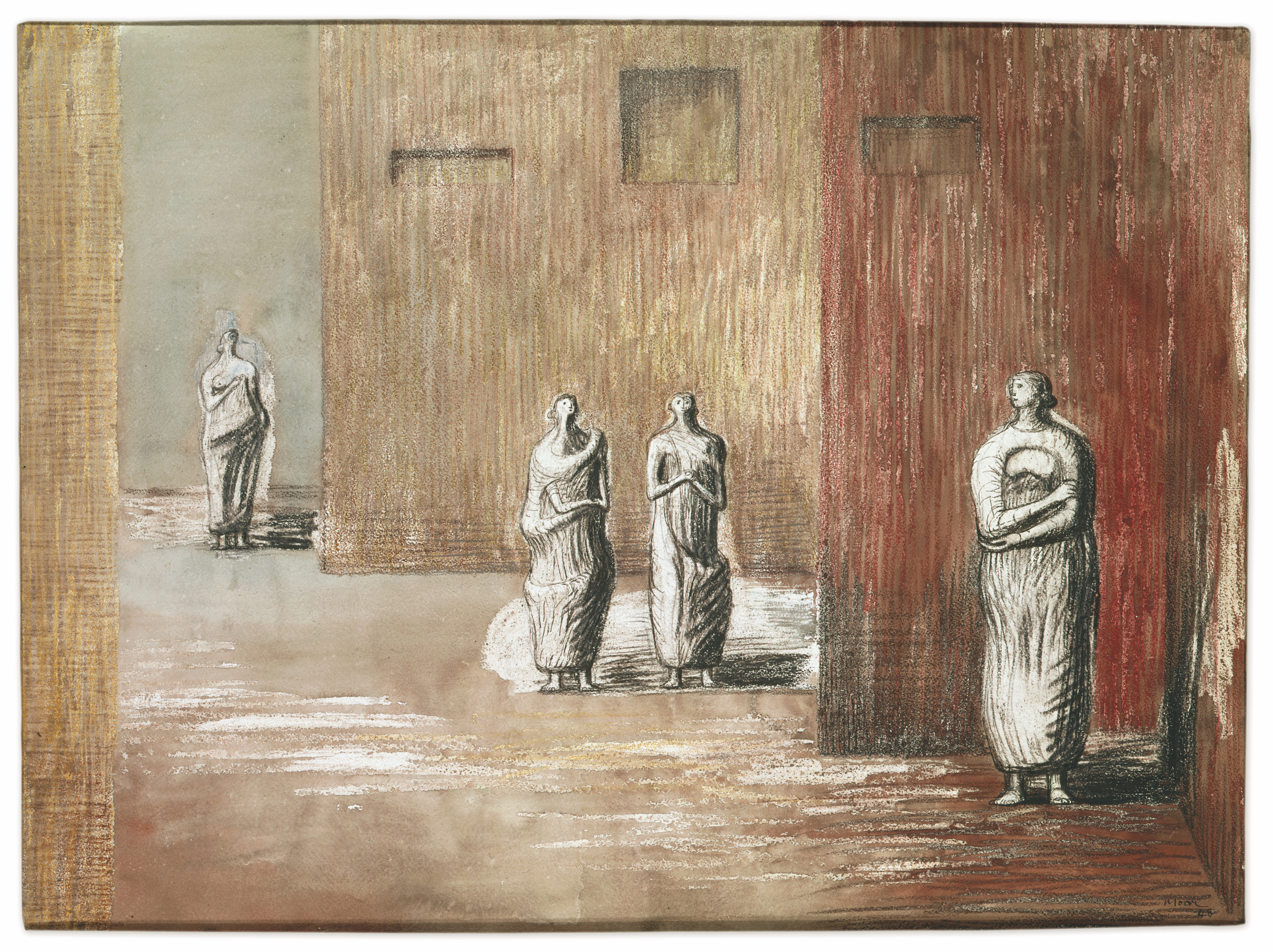LONDON — I hate to say it, but there are far too many Henry Moores in the world. Too many on shameless public display in Toronto. Too many at Tate in London. Too many in his former home/studio at Perry Green in Hertfordshire. Too many just about everywhere.
I’m talking about the sculptures, and especially the large, faux-antique figure groups — giant, crudely draped, splayed knees, pin heads and all. You know the sort of thing. Could he not stop himself making yet another Henry Moore? Could no one stop him?
Here is the good news. There are some excellent Henry Moores, too, and a couple of dozen are on view at the Courtauld’s bijou Drawings Gallery in the exhibition Shadows on the Wall. These are, for the most part, modest in size, and two-dimensional. Moore’s best works were his drawings, made under the pressures of World War II. His sculpture studio in London — oh most fortunate of misfortunes! — had been destroyed, so he had to settle for drawing instead.
Where did he go when the German bombers flew over, in relentless, malignant waves, night after night? Into an underground shelter, just like everyone else, and it is a collection of these shelter drawings, dating from 1940 and 1941, that are on display at the Courtauld. Moore’s underground shelters show us humanity in the raw, as strangers live hugger mugger with other strangers — his models were often impoverished immigrants whose lives had been shredded by grief, despair, fear. And these drawings are all the stronger, and all the more affectingly poignant (how often has that ever been said of a Moore sculpture?), for the drama of their physical context: the great brick walls that hem them in; the eerie, barrel-like tunnels that so often seem to resemble the arching of human ribs.
Alas, some part of the artist was already beginning to imagine how he might spoil it all. After he and his wife, Irina, had taken cover in the Belsize Park Underground Station, close to their home, on the night of September 11, 1940, he wrote: “I saw hundreds of Henry Moore reclining figures stretched along the platforms … even the train tunnels seemed to be like the holes in my sculptures.”
As soon as he got back to sculpting, all the heavy monumentality began to creep back in, and that feeling for the plight of real human beings seemed to slip away. Henry was back to being big Henry again.




Henry Moore: Shadows on the Wall continues at the Courtauld Gallery (Somerset House, Strand, London, England) through September 22. The exhibition was conceived by Penelope Curtis, and curated with Alexandra Gerstein and Ketty Gottardo.

